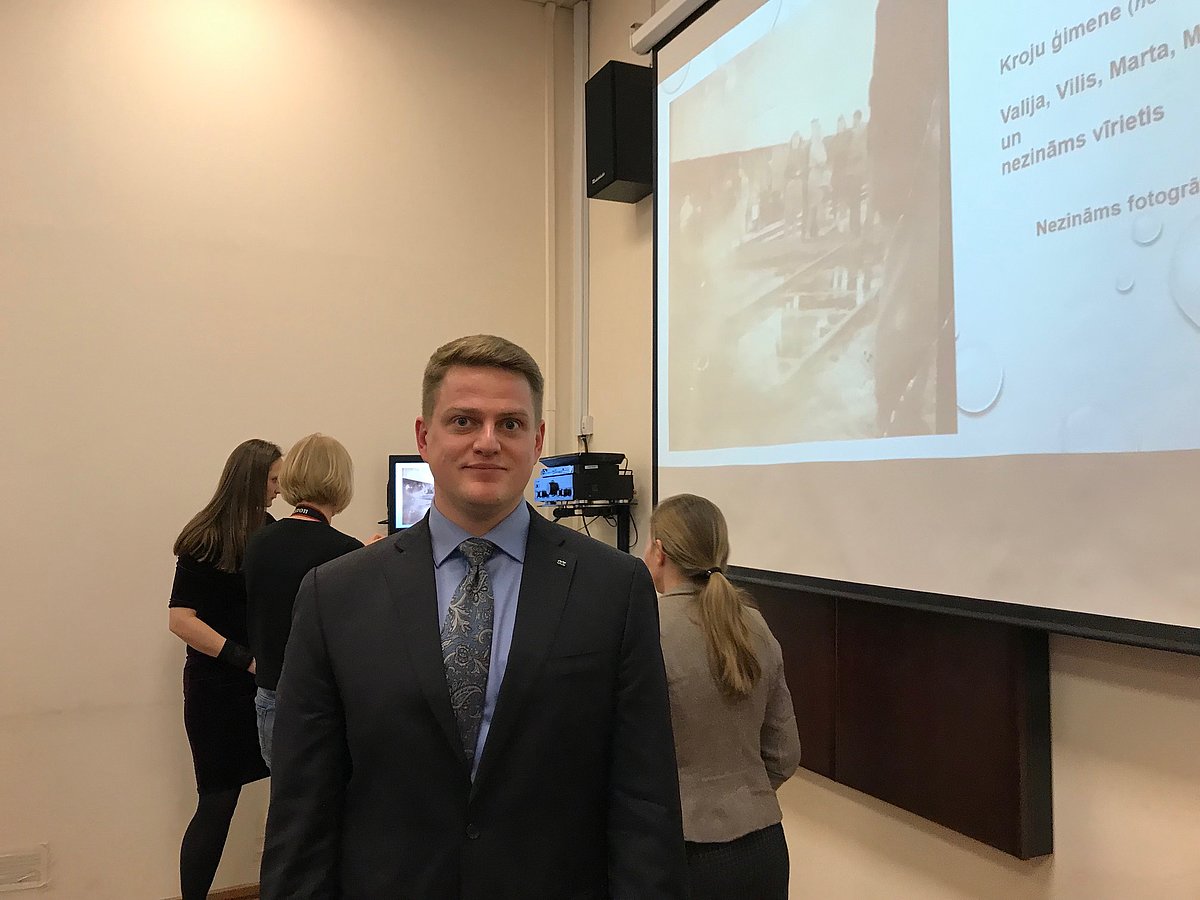
Yet, on the 25th of July, 2018, Oskars Gruziņš, a PhD student at the Faculty of Social Sciences of the University of Latvia, uncovered a fourth photograph as a result of his research in the Maria Sklodowska-Kiri innovative training network "Children Born of War- past present, and future" (CHIBOW).
The newly discovered photograph shows a group of people standing at the Ventspils railway station on March 25, 1949, before the train, filled with innocent victims of the Soviet regime, departs for Siberia. This small image, a bit larger than a matchbox, is the fourth known photograph of the second mass deportation of Latvians. It is unknown who took the image, yet judging from the angle of the camera, the photographer risked his life to take the photo in secret. After its discovery, the owner of the photo, Virginia Krebs, donated the original to the Museum of the Occupation of Latvia.
“During our interview, Ms. Krebs told me the story of her mother’s family,” said Gruziņš. “Like so many of my subjects her family was devastated by Soviet terror and repressions. She spoke of how her uncle was executed by the soviets in 1946 and how her aunts and grandparents were deported to Siberia in 1949. She mentioned that she had a photo of their deportation and, as in all my interviews, I told her that it would be best to look at the photo albums afterwards; when we had covered the family story and I had gained the context to fully appreciate and understand the images in the family albums. Knowing that photographs of the moment of deportation are practically non-existent, I thought to myself that she wanted to show me photos of the family before deportation or in Siberia. I could not have imagined that the photograph would be of the actual moment!”
After studying the fate of the people in the photograph, experts at the Museum of the Occupation of Latvia concluded that “In the foreground, in front of the train wagons, the Kroj family can be seen; Marta and Vilis, as well as their daughters Valija and Maiga. The third daughter, Rasma, is not in the image as she was placed in another wagon, because she had been taken from the city of Ventspils. The fourth daughter, Olga, with her two-year-old daughter Virginia, was the only member of the immediate family who was not deported and stayed in Latvia. The Kroj family was deported to the Omsk oblast, the Sherbakle district, Borisovska village and were released from exile only in 1958. Parents, Marta and Vilis, were forbidden to return to Latvia and they died in Siberia, yet their daughters eventually returned. The family had sent this image to their daughter and sister, Olga, in the early 1950s. The image was donated to the Museum of the Occupation of Latvia by the daughter of Olga, Virginia Krebs, last year. Upon donation, she told the museum that her mother had been reluctant to talk about the deportation of her parents and sisters. Only in adulthood did Virginia learn, bit-by-bit, the fate of her relatives. Even after her aunts returned to Latvia, contact in the family was not easy, because the years spent in separation have done their own. ”
The immense importance of this discovery cannot be overstated and, as a result, it has been widely covered by the media. It has been covered on LTV1 by Panorama, Morning Panorama, Cultural News, LNT News, TV3 News, PBK News (in Russian),and LTV7 News (in Russian). It has been covered on the radio by a number of outlets, including Latvian Radio 1. And it has been covered in the printed press, most notably by Latvijas Avize.

 CONFERENCE
CONFERENCE